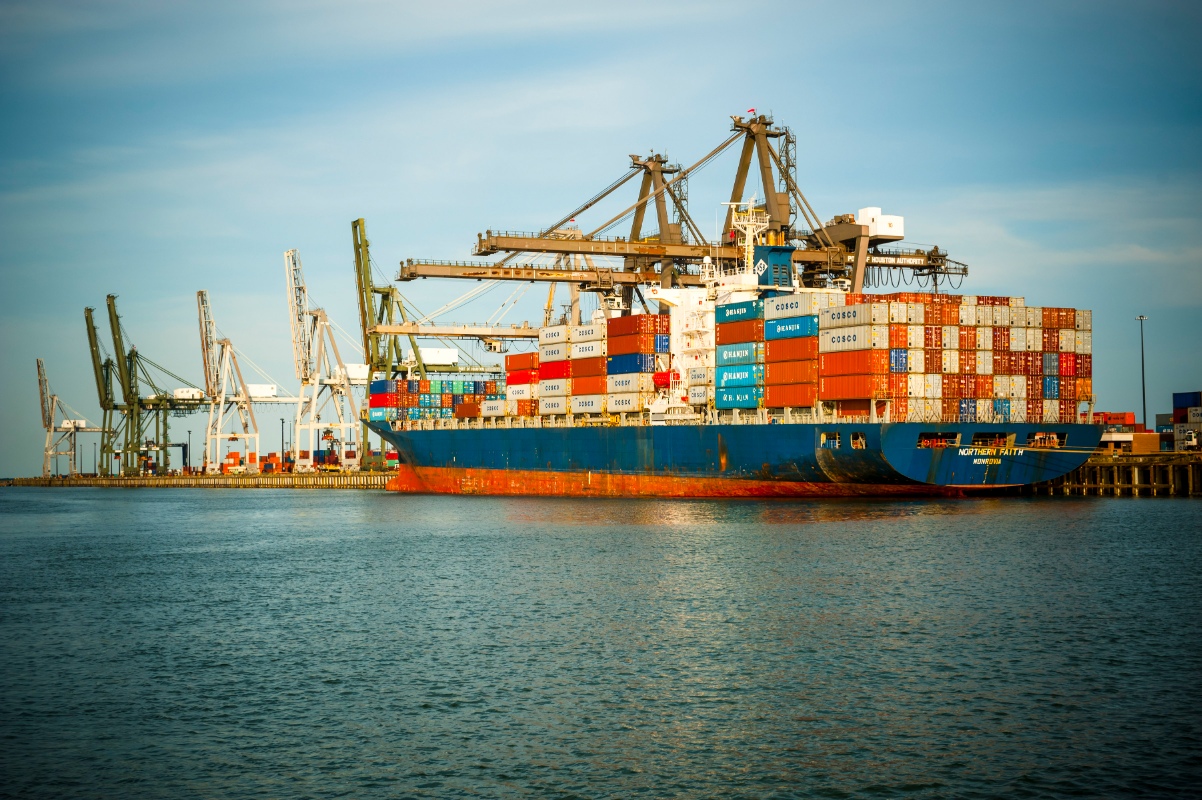Experts Dig in to Global Economy's Growing Impact on Houston
Published May 27, 2021 by A.J. Mistretta
The outlook for global economic growth is strong over the next two years, and that’s good news for Houston’s economy, which has become increasingly tied to the global market over the last decade.
That was one of the key takeaways from part one of the Partnership’s State of Houston’s Global Economy event held on May 26. Partnership Senior Vice President of Research Patrick Jankowski presented his analysis of the impact COVID-19 had on international business in the region and what recovery will require.
Jankowski said the global economy is expected to grow 6% this year and another 4.4% in 2022. That will bode well for this region where more than 17% of the economy and roughly 474,000 direct and indirect jobs are tied to exports alone.
“All I see this year for Houston is strong growth,” Jankowski said.
But it hasn’t been an easy 14 months. The pandemic took an unprecedented toll on the global market.
- 66 million worldwide COVID-19 cases—or the equivalent of half the U.S. population
- Global GDP fell 3.3% and 255 million full-time jobs were lost around the world
- Foreign trade dropped 5.3% and global foreign direct investment dropped 42% to the lowest level since the 1990s
Exports originating from the Houston region fell 18.3% during the pandemic, with much of the drop coming from crude and related petroleum products. Despite the drop, the region remained the leading U.S. exporting metro in 2020.
But as vaccine rollouts continue in the U.S. and around the world, the economy is picking up steam. Global consumer confidence is now at a record high, according to The Conference Board. More significantly for Houston, the region’s top trading countries are all expected to see strong growth this year and next, Jankowski said.
While lagging data has mostly yet to reflect the uptick, there are significant signs. International air traffic through Houston’s airports reached 518,492 passengers last month, up from just 26,952 passengers in April 2020 just after the start of the pandemic.
National Experts Weigh In
On day 2 of State of Houston’s Global Economy held May 27, Partnership President and CEO Bob Harvey moderated a discussion with a panel of international business experts covering topics from cybersecurity to global economic recovery. Panelists included:
- Rob Gorham, Executive Director of SecureAmerica Institute / Manufacturing Initiatives, Texas A&M Engineering Experiment Station (TEES)
- David Dollar, Senior Fellow – Foreign Policy, Global Economy and Development, John L. Thornton China Center, The Brookings Institution
- Ken Monahan, Vice President, International Economic Affairs, National Association of Manufacturers
- Ann Johnson, Corporate Vice President – Cybersecurity, Microsoft
Below are several key takeaways from the conversation:
Bullish on the Global Economy
The panelists agreed that the outlook for the global economy is positive. In the manufacturing sector alone, Monahan said that a recent survey of manufacturers found an 88% optimism rating, higher than it was in Q4 2020.
Gorham said he’s encouraged by the pivot in thinking that came with the pandemic and how it might be used in the future. COVID forced us to ask ourselves hard questions that led to new solutions, he said. “Now there’s an opportunity to use new technologies and innovations developed to tackle COVID in new areas.”
Growth of Cybersecurity Threats
In the wake of this month’s Colonial Pipeline cyber-attack that caused gas shortages in parts of the country, Johnson said we should expect more such attacks. “We’re encouraging organizations we talk to to return to basics,” she said, such as multifactor authentication and ensuring systems are frequently updated and patched. She said companies need to be prepared with resiliency plans that include cyber security and not just weather and other traditional threats.
An Evolving China
Following a volatile trade war and more recent tensions surrounding the pandemic, the U.S. is at a crossroads with China, Dollar said. One path is to treat the world’s most populous country like we did the Soviet Union during the Cold War and isolate China, prompting other nations to align with one side or the other. The other path where the U.S. has had some success already involves pushing China on specific issues where possible in collaboration with our allies.
“China has a very rapidly aging population,” said Dollar. In the years to come, he said, “their population, and in turn their workforce, will decline. This will lead China to become more of a consumer economy and that means a lot of the things the U.S. exports to China will grow.”
The Opportunity of USMCA
Monahan said the passage of the U.S.-Mexico-Canada Agreement, which replaced NAFTA, has created more certainty and confidence across sectors, including manufacturing. The agreement also modernizes how we approach trade in the 21st century. But he pointed out that passage was only the first step—now the U.S. must ensure partner countries hold up their end of the bargain so that all everyone benefits.
Filling the Talent Pipeline
As multiple sectors struggle to fill open positions with skilled talent, skills training and credentialing programs are becoming increasingly critical, Johnson said. “There are 500,000 cybersecurity jobs open right now in the U.S. alone,” she said. “If we don’t fill these jobs, we’re going to have more cybersecurity risk.”
Monahan echoed those sentiments, pointing to roughly 700,000 current manufacturing job openings nationwide. Reskilling and upskilling are necessary to make the U.S. manufacturing sector stronger and more globally competitive. But he said a perception shift is necessary for more young people and their families to see opportunity in skills-based jobs.
Read Jankowski's analysis and the Global Houston report. Members can log in to the Member Portal to view the recordings of both presentations. Learn more about the Partnership's international business efforts.
 The Houston Report
The Houston Report




















